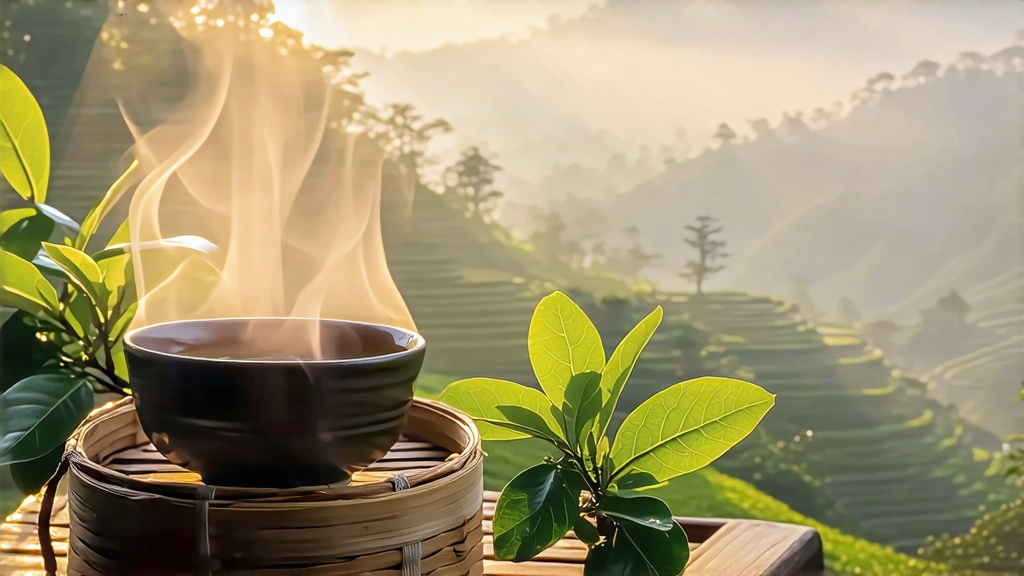
Alishan High-Mountain Oolong is not merely a tea; it is a liquid map of Taiwan’s central mountain range, a cultural passport stamped by centuries of migration, war, trade, and relentless pursuit of aromatic perfection. International drinkers often meet “oolong” as a generic restaurant pour, yet within that broad category Alishan stands apart—cultivated above the clouds, coaxed by chill nights and short sun hours into a flavor that can taste like dewy orchids, fresh cream, and roasted apricot all at once. To understand this tea is to follow the island’s spine upward, into forests of cedar and bamboo where tea gardens sit cheek-by-jowl with cherry blossoms and mist so dense it feels breathable.
Historical roots
Oolong itself was born in Fujian during the Ming dynasty, when partial oxidation—somewhere between green and black—was discovered almost by accident. Migrants from Anxi and Wuyi carried tea seedlings and charcoal-firing skills across the Taiwan Strait in the early 1700s, but Alishan remained a remote aboriginal territory until the late 19th century. Development of the Alishan Forest Railway under Japanese colonial rule (1895-1945) opened the 1,000-1,400 m elevations to Han settlers who noticed indigenous wild tea trees thriving under cloud cover. By the 1980s, as Taiwan’s economy boomed, tea makers realized that these cool, foggy slopes could produce an oolong far more fragrant than lowland versions. Government agricultural stations released improved cultivars—most famously Jin Xuan #12 and Qing Xin #17—while farmers built miniature factories on ridges reachable only by foot or cable lift, turning Alishan into a flagship name for “high-mountain tea” (gaoshan cha).
Terroir and cultivars
Alishan is not a single peak but a 20-km massif within the Yushan range. Volcanic basalt soils, drained by steep gradients, force roots to struggle, concentrating amino acids. Diurnal swings of 15 °C or more slow nighttime respiration, locking in sugars and floral volatiles. Ultraviolet intensity at altitude boosts catechin and aromatic alcohols, yielding a naturally sweet, almost milky liquor even without additives.
Two cultivars dominate. Qing Xin (“green heart”) is the traditional bush: small leaves, low yield, but unparalleled elegance—think lily, white peach, and a cooling alpine finish. Jin Xuan, developed in 1981, is slightly larger, higher yielding, and famous for a latent lactone that can evoke butterscotch or light condensed milk when lightly baked. Purists debate which better expresses Alishan’s soul; cup both side-by-side and the difference is immediate—Qing Xin whispers, Jin Xuan hums.
Plucking standard
Only the “two and a half leaf” pluck is accepted: the tender bud plus two open leaves, with the insect-bitten tip of a third still clinging. This fractional extra leaf adds lignin that survives the long withering needed for high-mountain leaf, contributing body without astringency. Picking starts at dawn when dew is still visible; baskets are shaded with banana leaves to prevent premature oxidation on the trek down to the factory.
Crafting the leaf: an eight-act play
- Solar withering: Leaves are spread on bamboo trays under filtered morning sun for 15–25 minutes, turned every five. The goal is partial moisture loss and activation of hydrolytic enzymes that will later generate honey notes.
- Indoor withering & tossing: Trays move onto slatted racks in a climate-controlled room (22 °C, 65 % RH). Every hour the leaves are tossed by hand—30–40 shakes that bruise edges just enough to let oxygen in. This repeated “awakening” builds floral aromatics; the room begins to smell like pear and gardenia.
- Oxidation arrest: When leaf edges turn jade-gold and the aroma shifts from grassy to confectionary, the batch is tumbled into a 200 °C drum for 90 seconds. The kill-green fixes oxidation at roughly 20 %, preserving a green center while rimming the leaf with amber.
- Rolling: While still warm, leaves are wrapped in cotton cloth and rolled under mechanical pressure into tight hemispheres. This ruptures cell walls, coaxing oils to the surface that will later translate into a creamy mouthfeel.
- First drying: Low-temperature ovens (80 °C) reduce moisture to 8 %,